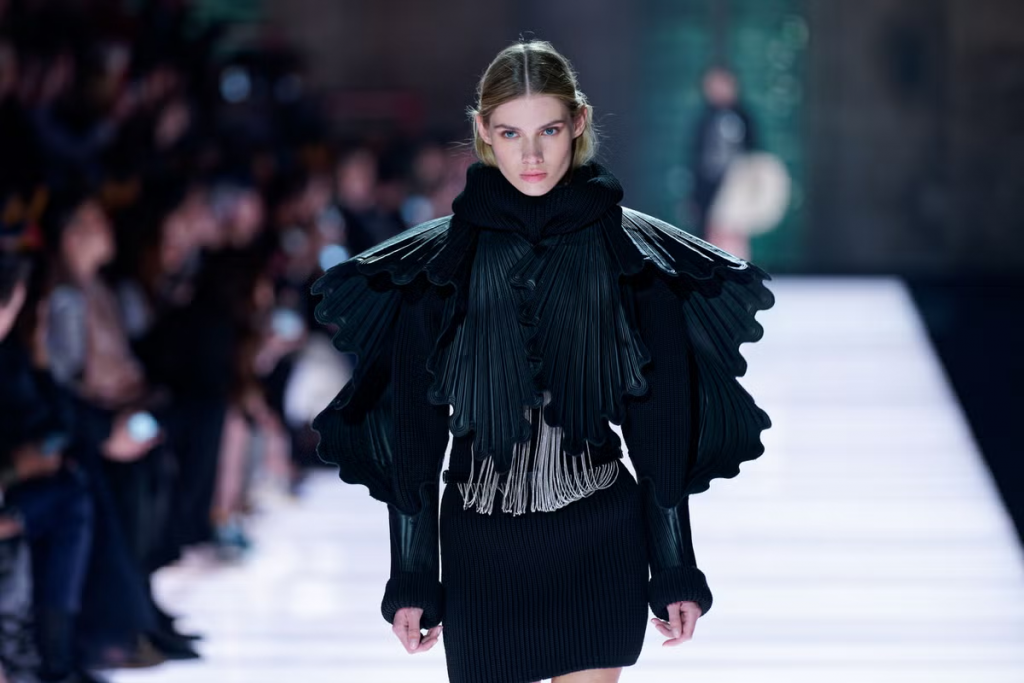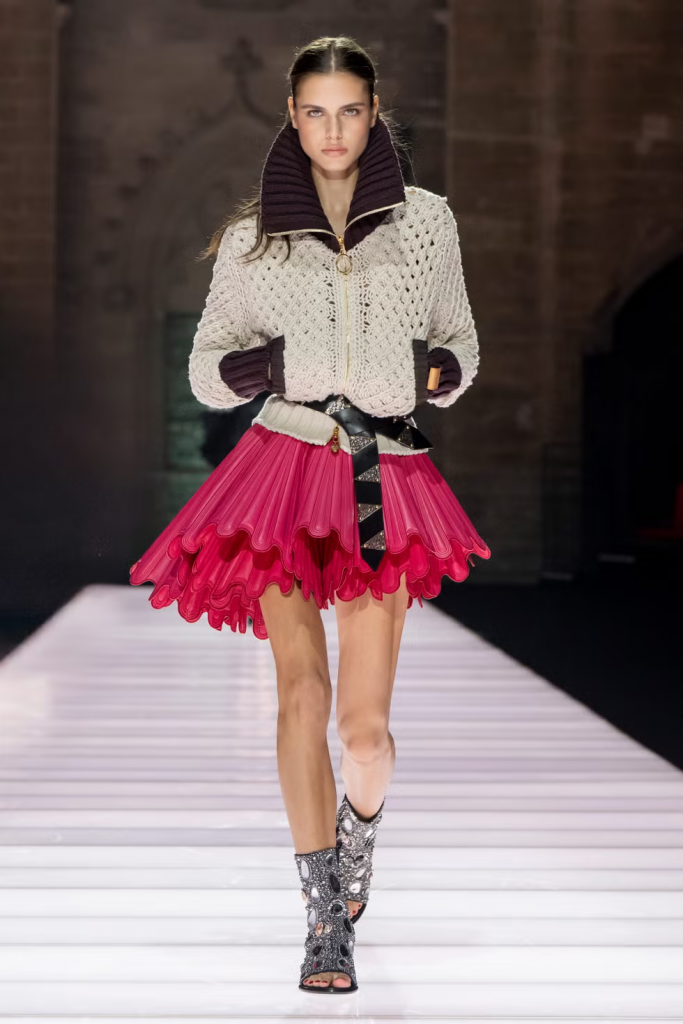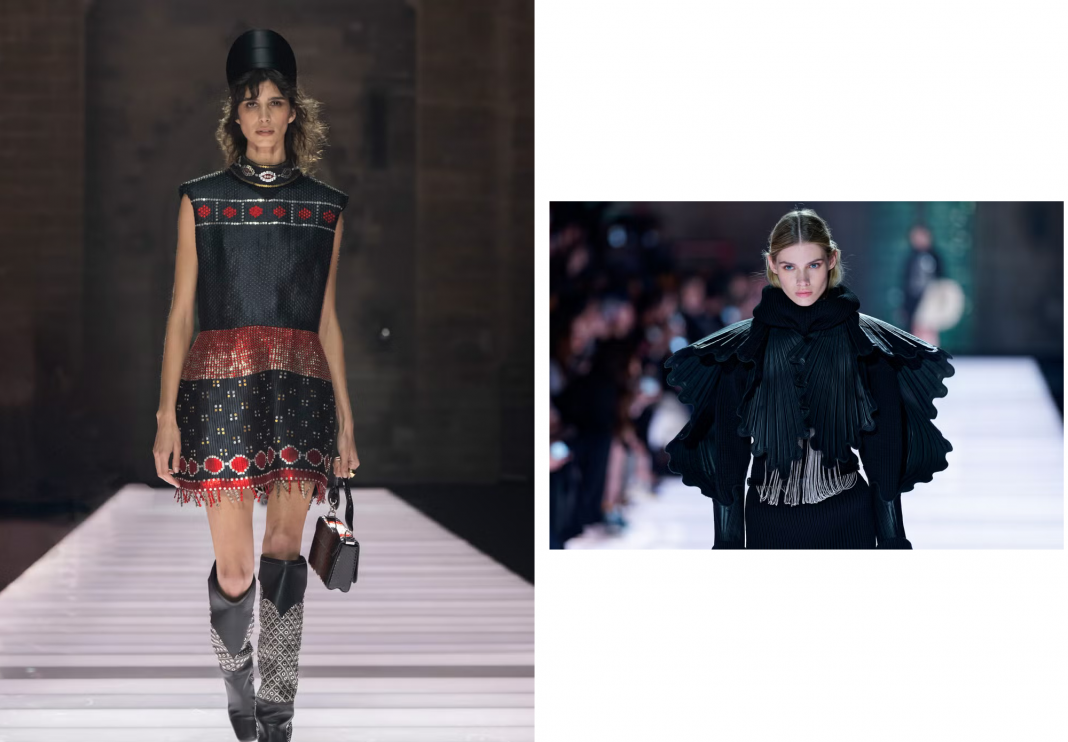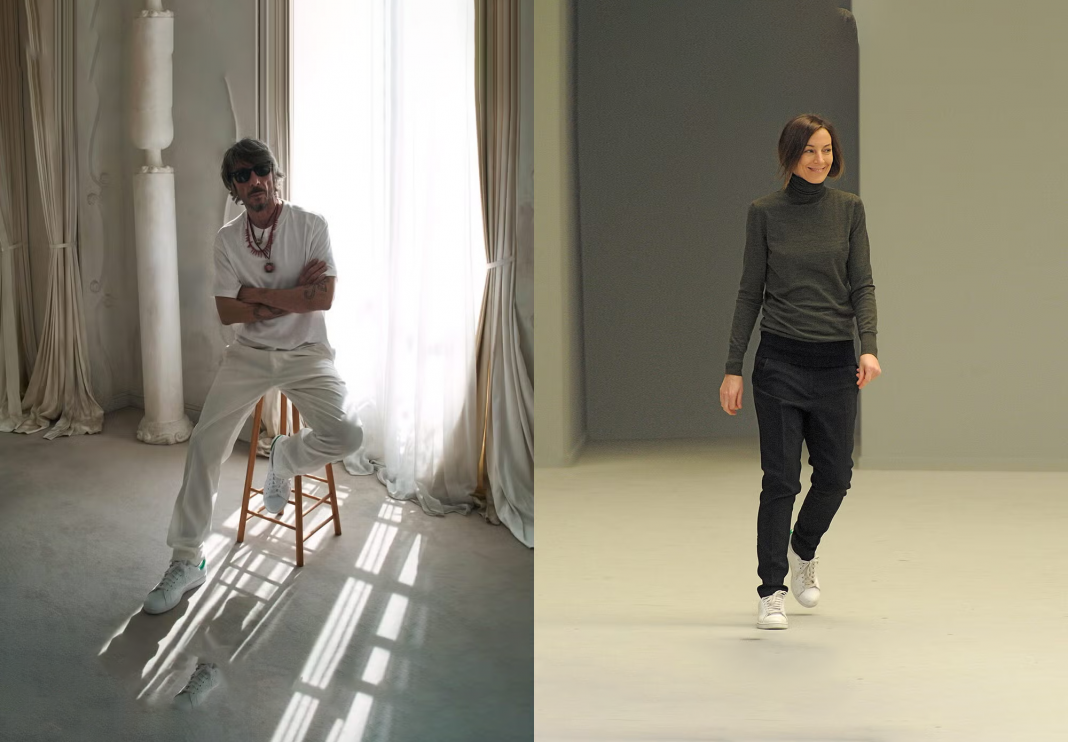Louis Vuitton’s Cruise 2026 show was no ordinary fashion presentation. Under the direction of Nicolas Ghesquière, the collection was unveiled in the historic Palais des Papes—a 14th-century papal palace in Avignon, France, steeped in centuries of ceremonial grandeur. In a setting where six papal conclaves were once held between 1334 and 1394, the atmosphere brimmed with solemnity and spectacle, merging history with modern runway artistry. Rather than offering a themed narrative or a singular archetype, Ghesquière delivered a nuanced collection that felt intrinsically connected to the location without mimicking its past. This approach echoed his longstanding style philosophy: designs that resonate deeply without feeling like costume, clothing that balances artistic expression with wearable innovation. For Cruise 2026, the designer invited the audience to explore the performative power of fashion—how garments can narrate stories, evoke emotion, and transcend the everyday.
A show steeped in history and theatricality
Staging the show within the Palais des Papes was both symbolic and fitting. The vast courtyard, central to Avignon’s renowned theater festival, was transformed into an evocative stage. The runway was lined with altar-like chairs upholstered in red velvet, framed by empty tiered seating reminiscent of a historic amphitheater. The atmosphere was heightened by an eclectic soundtrack that blended church choir chants with French horns, galloping hooves, and the gentle calls of birds—a sonic homage to the layered history of the venue.

The timing was impeccable. Just weeks after the election of Pope Leo XIV, the world’s fascination with conclaves—complete with imagery of crimson robes and white smoke—was fresh. Ghesquière cleverly tapped into this spectacle of ritual and ceremony, reminding viewers that fashion, too, can be an act of performance imbued with deep emotional resonance. In this moment, the runway became a kind of sacred theater where clothing carried its own spiritual and narrative weight.
Medieval misfits meet futuristic romance
As the models took to the runway, Ghesquière’s vision unfolded in layers of rich contrasts and playful anachronisms. The collection was a tribute to outsiders and dreamers—“medieval misfits” and “princesses who prefer punks to white knights,” as one might describe it. Romantic elements like ruffles, chiffon, and jacquard weaved seamlessly with tougher materials such as leather, geometric embroidery, and metallic accents.
Iconic Ghesquière details emerged throughout the lineup: a white cargo jacket paired with a metallic snakeskin mini skirt, flat boots featuring cutout toes and broken mirror embellishments, and a striped long-sleeved dress with intricate embroidery evoking a blend of Joan of Arc, Xena the warrior princess, and a futuristic sci-fi heroine. The collection moved fluidly between past and future, blending Renaissance influences with space-age aesthetics.

The beauty of the show lay in its meticulous craftsmanship—the finer points that made each piece extraordinary. Renaissance jacquards were punctuated by shearling and fur collars; a Victorian-style shirt dazzled with fringed chains; and a striking fuchsia mini skirt sculpted from pleated leather projected outward like a frozen flower. These were garments that hinted at the grandeur of religious ceremonial robes, reflecting a time when clothing was not just worn but revered as an instrument of power and identity.
Fashion as ritual and transformation
The show concluded with a striking tableau: models seated in the red velvet theater chairs, grouped together yet poised in contemplation, as they looked down upon the applauding audience.Then, in a powerful closing moment, Ghesquière himself walked through the rows of models and down the runway—his presence a reminder of fashion’s ability to transform and transcend. No literal conclave was convened, nor was the collection a linear narrative. Instead, Ghesquière invited the attendees to witness a collective experience, one that elevated fashion beyond mere aesthetics. The show underscored clothing’s role as a form of art, storytelling, and emotional expression—an empowering act that resonates deeply in uncertain times.

In bringing the fashion world into the hallowed halls of the Palais des Papes, Louis Vuitton Cruise 2026 affirmed that style can be more than surface. It can be a ceremony, a performance, a moment of higher meaning. For Nicolas Ghesquière, fashion’s power lies not in spectacle alone but in its capacity to connect, to inspire, and to transform those who wear it.






